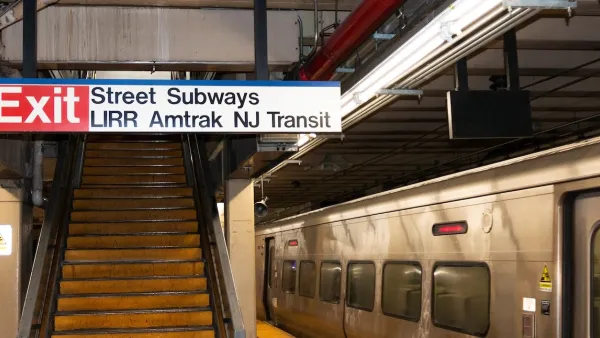It's the nation's shortest commuter route, less than 3 miles with no intermediary stops. The train composed of two electrified cars, with presidential history in its 145 years. If Princeton University has its way, it will soon be replaced by a bus.
Technically know as the Princeton Branch, amongst locals as the Dinky Line for the name of the single Budd Arrow III self-propelled electric coach that connects Princeton University to Princeton Junction, it is up to New Jersey Transit to decide if a bus will replace it.
"The bus makes sense in transportation terms, said Mr. Reed, a former mayor of Princeton borough, but he argued that it would also allow the borough and the university to sidestep their long impasse over the school's planned arts complex. The university wants to move the Dinky station 460 feet farther south to make room for the complex, but the borough is resisting that idea because it would make the station a longer walk from town.
Townspeople keen to preserve the train have flocked to a "Save the Princeton Dinky" Facebook group.
But if these are the Dinky's final days, one might not immediately sense it from riding the train. On a recent weekday morning, most of the seats in the Dinky's one open car were filled with commuters sharing newspapers and conversation."
Correspondent's Notes:
*Do note confuse this line with Florida's 6-mile Dinky Line, 1889-1969.
*Should the university be successful, it will have to shorten its "Mass Transit Travel Options" included on its "Traveling To Princeton" page in its Parents Handbook.
Thanks to NYT Alerts - commuting-transit
FULL STORY: Princeton Journal: Dinky or Bus? A Town Is Torn

Planetizen Federal Action Tracker
A weekly monitor of how Trump’s orders and actions are impacting planners and planning in America.

Maui's Vacation Rental Debate Turns Ugly
Verbal attacks, misinformation campaigns and fistfights plague a high-stakes debate to convert thousands of vacation rentals into long-term housing.

Restaurant Patios Were a Pandemic Win — Why Were They so Hard to Keep?
Social distancing requirements and changes in travel patterns prompted cities to pilot new uses for street and sidewalk space. Then it got complicated.

In California Battle of Housing vs. Environment, Housing Just Won
A new state law significantly limits the power of CEQA, an environmental review law that served as a powerful tool for blocking new development.

Boulder Eliminates Parking Minimums Citywide
Officials estimate the cost of building a single underground parking space at up to $100,000.

Orange County, Florida Adopts Largest US “Sprawl Repair” Code
The ‘Orange Code’ seeks to rectify decades of sprawl-inducing, car-oriented development.
Urban Design for Planners 1: Software Tools
This six-course series explores essential urban design concepts using open source software and equips planners with the tools they need to participate fully in the urban design process.
Planning for Universal Design
Learn the tools for implementing Universal Design in planning regulations.
Heyer Gruel & Associates PA
JM Goldson LLC
Custer County Colorado
City of Camden Redevelopment Agency
City of Astoria
Transportation Research & Education Center (TREC) at Portland State University
Jefferson Parish Government
Camden Redevelopment Agency
City of Claremont



























